Postcards from Gavea
Authors
- Mario Cesar de Freitas Levy (picture archive), Leif Snellman (comments), Antonio Carlos Barque de Lima (additional input)
Date
- September 10, 2002; updated on October 23, 2002
In the 1930s Mario Cesar de Freitas Levy's father put together an album with some pictures from the races at the Gavea track. Mario has now scanned some of these hidden treasures with a digital camera and we have the pleasure to present them here at 8W.
Rio 1934
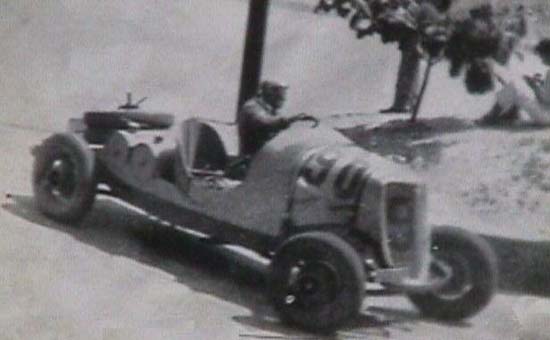
During the 30s the Grande Prêmio da Cidade de Rio de Janeiro were held on the infamous 11.16km long Gavea track. Known locally as Trampolin do Diablo ("The devil's spring board") the track followed the coast on the edge of a 30 m high cliff and returned to Gavea up in the mountains where it featured a series of hairpins in hazardous terrain. Here we see Irineu Correa in his Ford V8 special in one of the hairpins during the 1934 race.
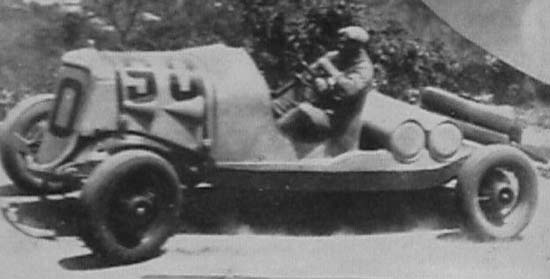
The first race was held in 1933. In 1934 the Rio Grand Prix had still to reach international fame. The field consisted of South Americans who entered whatever cars they could get. During the mid 30s the Ford V8 proved to be a popular choice for local drivers, no matter if the races were run in Finland, Portugal or Brazil. Correa's car is stripped almost to its "bare bones".
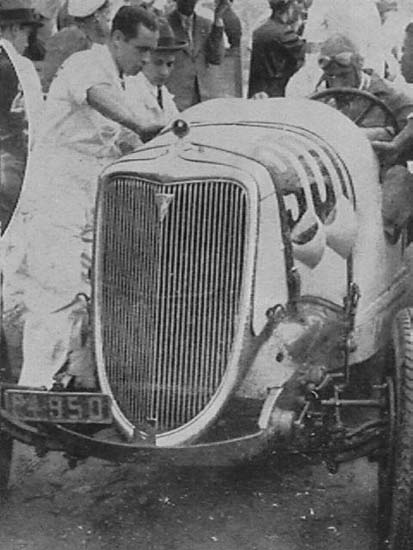
The picture shows Brazilian Irineu Correa, who won the 1934 race. While the first race, run in 1933, had passed without any major incidents, the 1934 race was darkened by a fatal crash when Italian-born Stefano "Nino" Crespi hit a post on the Marques de Sao Vicente street. And Correa himself would be the next victim.
Rio 1935
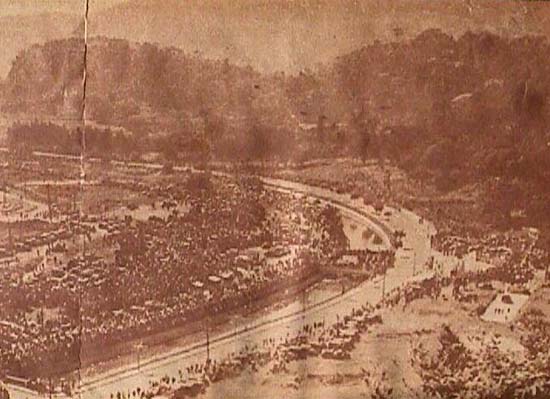
View over the track depicts the Visconde de Albuquerque Avenue, with the canal placed alongside it, connecting some covered streams and a nearby lagoon with the sea, at Leblon Beach. Note the hilly terrain in the background. Nowadays the canal separates the Avenue in two tracks, but in 1935 only one track existed, located near the hills.
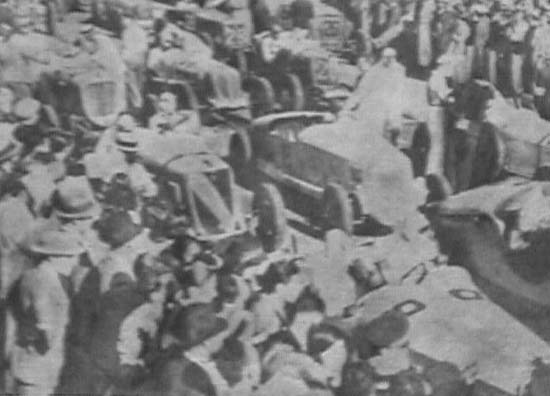
The 1935 grid. Entries include Bugattis, Fords, Chevrolets and FIATS.
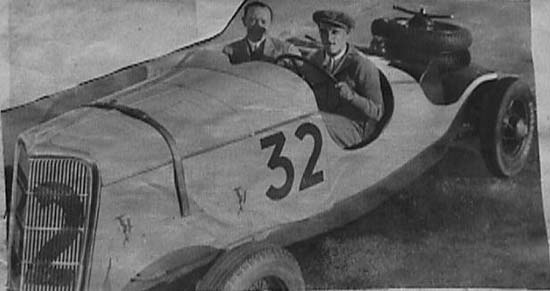
Irineu Correa in his 1935 Ford V-8 Special. The winning 1934 car was sold to another Brazilian pilot, Geraldo Avellar, who would race it to 4th place in the Gavea Nacional of 1938, with a shortened wheelbase and another body.

The aftermath. Correa's car has fallen down the canal at Visconde de Albuquerque street on the first lap of the race, with fatal results. The car was salvaged from the accident and would be used by two more Brazilian pilots in the Gavea races of 1936, '38 and '39. The cursed car would bring bad luck in the form of another fatal crash and two more accidents, all during practice.

Sadly there are no subtitles to some of the pictures in the album - so the drivers in this and the following four pictures were unknown to us when we received the scans. But thanks to help from Brazil (thanks, "O Volante"!) we now know that the above No.16 entry was another Ford V8 driven by Nicola de Santis.
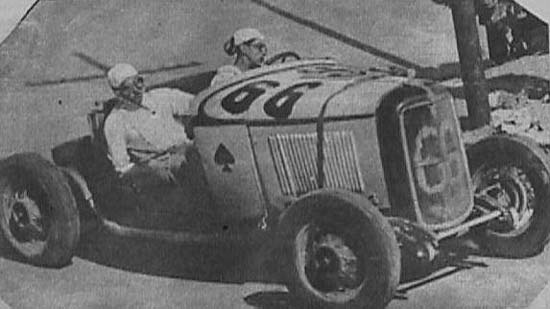
Benedicto Lopes' Ford V8. Crudely shaped as it may be, this Ford V-8 Special built and raced by Brazilian mechanic and racer Benedicto Lopes led the race for several laps but had to retire with a mere four laps to go, due to an accident caused by an also-ran.
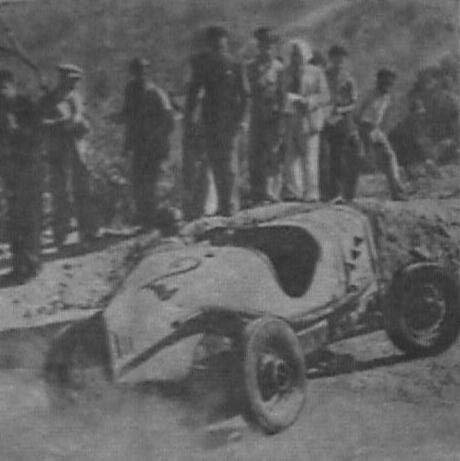
A No.2 or is it one of 12, 22, 32, 42, etc.? Antonio Barque from Brazil believes it the No.72 Ford V-8 Special of Cicero Marques Porto.
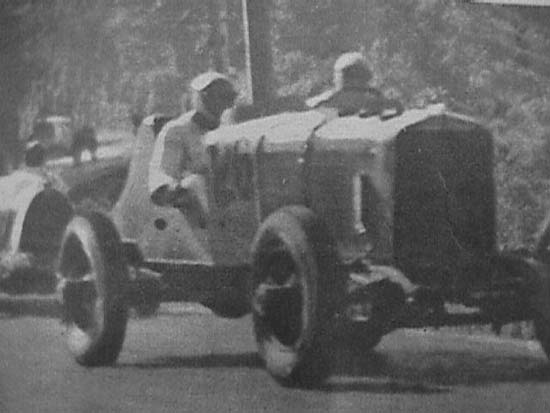
Joao Ferreira de Souza in his La Salle.

But we can't see any numbers on these cars...
Rio 1936
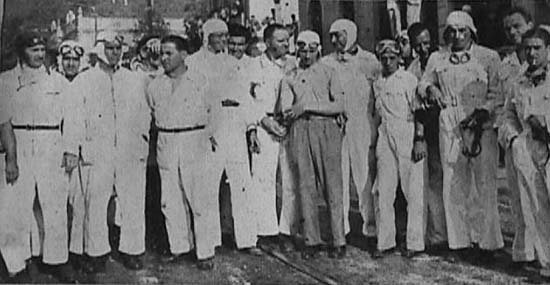
The 1936 drivers. The race had by now grown to international status and included several European entries. Antonio Barque recognizes Ricardo Caru (4th from the left), Manuel de Teffe (the tall, bespectacled driver 5th from the left), Vittorio Coppoli (8th from the left) and Francisco "Chico" Landi (the short and lean man 10th from the left).
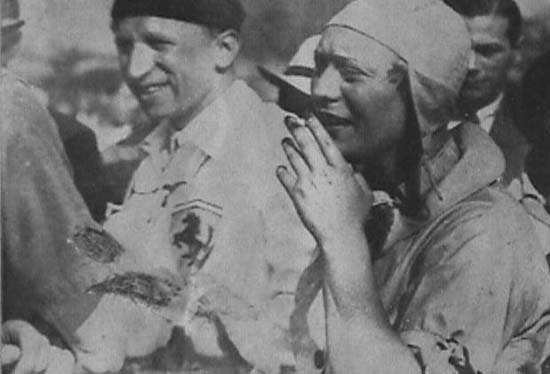
One of the entries was French driver Mlle. Hellé-Nice. Her South American adventure would end in tragedy at São Paulo a month later. "Helle-Nice" (Mariette Helene Delangle, 1900-1984) was
an ex-casino dancer and ex-acrobat turned racing driver. Her presence in Brazil in 1936 caused quite a stir, to the extent that her pseudonym, written Helenice or Elenice, became a woman's given name in the country from then on!

The start of the 1936 race. Note the tram tracks on the start straight. The two streamlined Alfa Romeos that look a bit like 8C-35s are in fact Ferrari entered 2900A stripped sports cars to be raced by Pintacuda and Marioni. Next to them are the "Monzas" of Hellé-Nice and de Teffé. The arrow points at the race winner, Vittorio Coppoli.
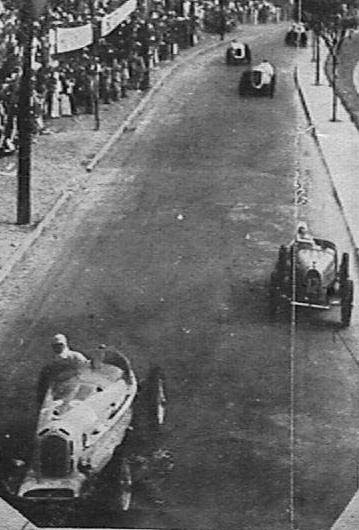
Mlle. Hellé-Nice's blue Alfa Romeo "Monza" in front of eventual winner, Italian Vittorio Coppoli in the Bugatti #12.
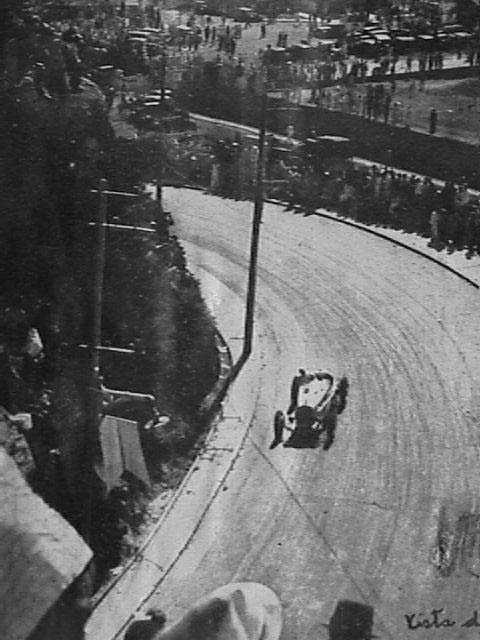
Seems like Hellé-Nice again?
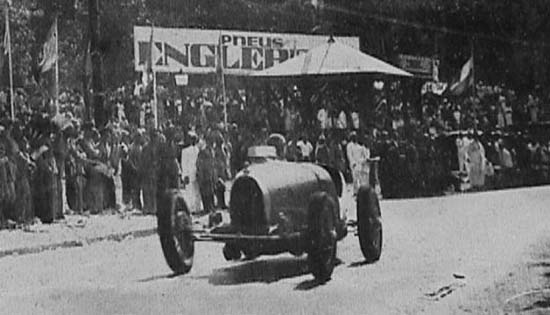
Italian Vittorio Coppoli. Coppoli was an Italian driver/mechanic who migrated to Argentina, just like Vittorio Rosa and Ricardo Caru, who also raced at Gavea. He worked in the central Argentinean Bugatti agency at Buenos Aires.

A personal shot of the 1936 winner.

The picture shows Manuel de Teffé, one of the first Brazilians to race in Europe, in his Alfa Romeo "Monza". Note the riding mechanics, a custom at that time already long gone in European racing. He was the late stage leader but had to make a late pitstop for refueling eventually finishing third.
Rio 1937
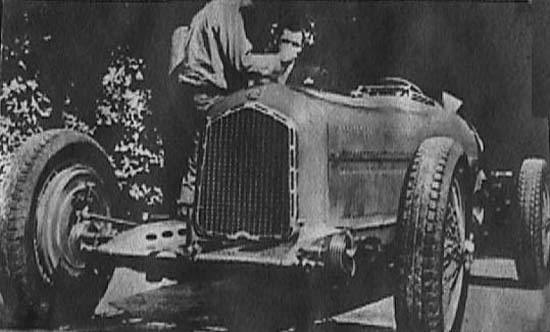
The car of Brazilian champion Manuel de Teffé. This Alfa Romeo B-3200 was won by Teffé after a
concours organized by the Brazilian Automobile Club asking the public to give their vote to the best Brazilian driver. The prize was supposed to be a modern European Grand Prix car. However, when Teffé received the car, it was a elderly used type that had arrived from Italy without overhaul and
with spares missing. Teffé complained about it and was subsequently punished by the Club, preventing him to compete in the 1937 Gavea race.
The car would have a long racing career in Brazil and Argentina. In 1941, Brazilian ace "Chico" Landi would win the Gavea race with this car, the first of his three consecutive wins in this venue. The car then sported hydraulic brakes and a modified radiator grille.
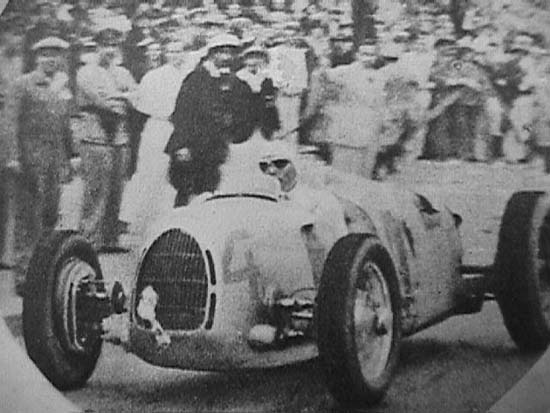
Stuck persuaded Auto Union to send a car to Brazil for him to enter in the 1937 Rio GP.
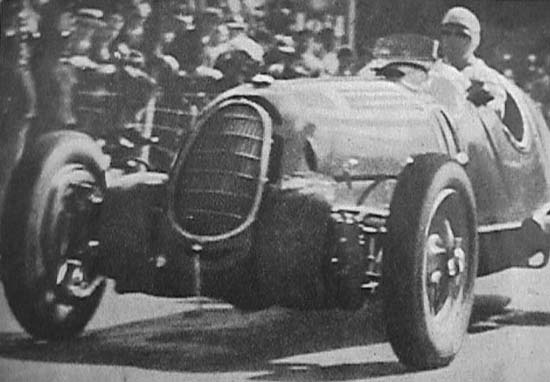
Scuderia Ferrari sent two Grand Prix cars to the race, a 4.1-litre 12C-36 for Marquis Antonio Brivio and a 8C-35 3.8-litre for Carlo Pintacuda (seen here).
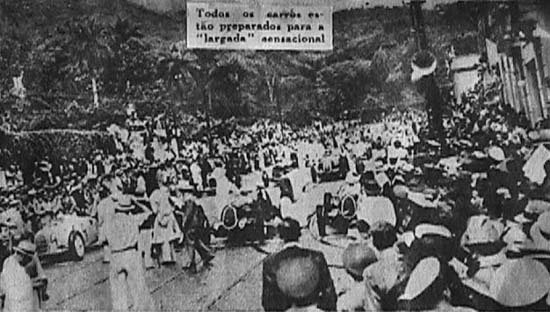
The grid with Stuck's Auto Union to the far right.
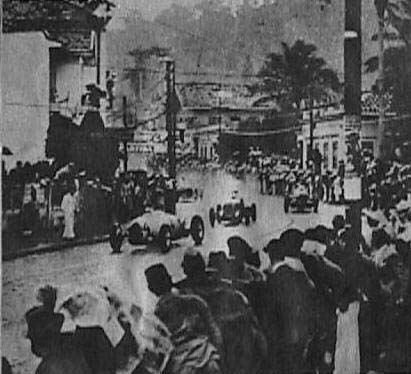
The start. It's raining and the drivers are faced with cobblestones, spray and tram lines. Owners of Cris Nixon's Silver Arrows can compare this picture with the one on page 227, taken seconds earlier.
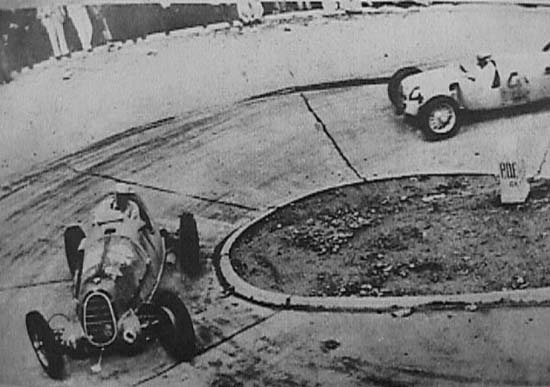
The duel between Pintacuda and Stuck. On the extremely twisty mountain sections the Alfa Romeos had the edge over the powerful Auto Union.

This should be the fight between Argentinian Carlos Arzani's Alfa Romeo 8C-35 and Portugese Vasco Sameiro's Alfa Romeo 8C for 4th place. Arzani had been to Europe that spring to buy the new car and raced it at Naples before retuning to South America with it.
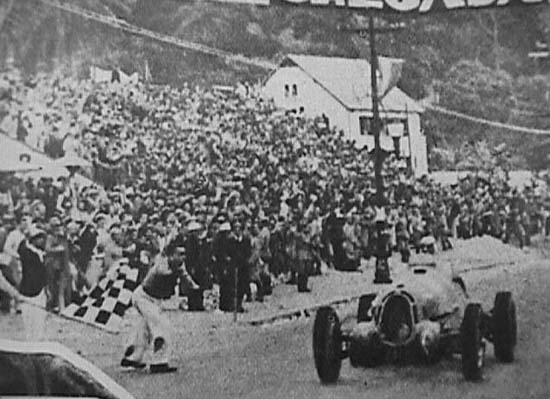
Pintacuda actually ran out of fuel, gambling on making it to the finish without refuelling. Pushed across the line by the momentum of the car he was able to hold off a furiously charging Stuck to win by an 7.3-second margin. Scuderia Ferrari received a huge 1.5 million lire prize money for their victory, making the long trip worthwhile.
With his 3 victories in Brazil, in 1936 (Sao Paulo) and in 1937-1938 (Rio), Pintacuda became a national hero. For over 30 years his name was synonymous for speed in Brazil. Crazy drivers were called Pintacudas. In 1950, a carnival song in Rio referred to a stutterer, a ladies' man who was slow to speak but was (as fast as) a Pintacuda to kiss!
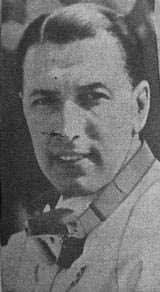
Sameiro managed to beat Arzani to finish 4th.

Brazilian top-runner Benedicto Lopes finished 6th. He used the ex-Hellé-Nice Alfa Romeo 8C-2300 Monza that he had bought from her and repaired. Soon after, he would race the car twice in Portugal, obtaining one 2nd and one 3rd place.

Another Brazilian driver, Artur Nascimento Jr, finished seventh in his new Alfa Romeo B-2900. With this car, later to become the property of Geraldo Avellar, he would go on to win the Circuito de Gávea Nacional the next year.
